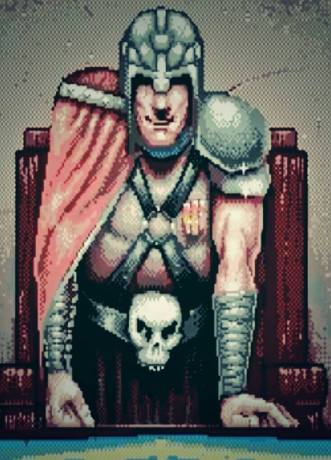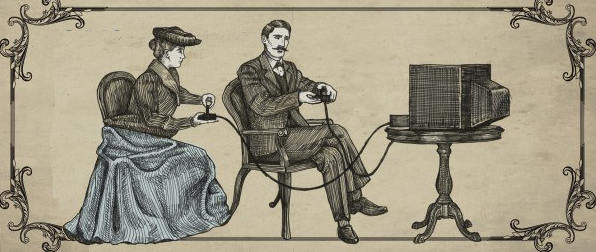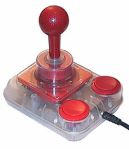I never owned a Nintendo Entertainment System and in fact only knew a handful of people that did. But if you talk a stroll through the virtual pathways of the internet you’ll likely find hundreds if not thousands of Australian video game enthusiasts in their 30’s and beyond spouting their eternal and undying love of all things Nintendo. They’ll say how they’ve always been fans of Nintendo and how getting an NES on Christmas Day in the mid-eighties changed their lives for the better and kickstarted their interest in video games.
I’m not calling these people liars, but they certainly weren’t the same kids I knew as young lad growing up in Australia.
I grew up right alongside the renaissance of videogames in the 1980s, right after the industry’s fabled full-scale collapse in 1983. But in Australia, and probably Europe and the United Kingdom, they never went away. Atari was most definitely a thing, and almost every household I have ever been to has an old Atari sitting in an attic somewhere gathering dust, but it didn’t signal the end of all things interactive entertainment like it did in the United States. In fact it didn’t really register on our radars.
You see there was this little company called Commodore that, through much of the 1980’s and arguably the early 1990’s, cornered the market to become the premiere destination for games in Australia. While the 16-bit era saw Mega Drive and Super Nintendo kiosks at big retailers spruiking the latest in console-based interactive entertainment, prior to that it was almost unheard of to see an NES in the wild. No, down here it was all computer monitors running the latest Amstrad, Commodore 64, and later Amiga 500 (and ill-fated 2000) games. Shadow of the Beast, Space Ace, and the still incredibly impressive Stunt Car Racer were centre-pieces of electronics stores and department stores, wowing not just kids that wanted to find a home computer under the tree at christmas time, but also the parents who were blown away at the cinematic quality that these machines were pushing. Commodore, and to a lesser extent Amstrad, were household names rather than phenomenons restricted to the younger consumer.
It was a truly universal thing, and school yard discussions were less focused on Super Mario or the Legend of Zelda, and more on West Bank, Strange Loop, and later, Shadow of the Beast. This was helped in no small part by the rampant piracy of software, particularly on Commodore platforms, with programs like X Copy taking pride of place as the premiere software used to copy and share games between friends in the school yard. It was part of the culture of the industry at that time, and as most people of my age, we were just ignorant children who wanted to experience the latest Sensible Software release. So while children in United States schools were talking about the Clash at Demonhead, in Australia we were plotting global conquest in what is arguably Peter Molyneux’s best work, Power Monger.

It would be remiss of me to discount the impact that consoles had in this time, though. The Sega Master System, released in the mid-eighties, enjoyed tremendous success in Australia and was a tour de force in the country well into the Mega Drive’s life. The release of the Master System II in 1990, in hindsight a real oddity of a system in the context of its time, gave it legs to really sit side by side with its big brother on store shelves. But as far as consoles go, while Alex Kidd was all the rage, Mario didn’t really hit his peak of popularity until Super Mario World and chances are most people had their first experience with NES Mario in their enhanced Super Mario All-Stars form. An NES was a rare sight in the 1980’s and it wasn’t until much later that many of us, myself included, had the chance to experience many of the games heralded as classics by the American and Japanese retro gaming enthusiasts. To me Duck Hunting was something the royal family did, and Zelda was a rather pretty name for a young lady who was new to the school. I’m being a tad dramatic, but I think you get my point. To drive my point home there was one kid in my year level at primary school who owned an NES.
Then things started to change, something I put down to the incredible popularity of the Game Boy in school yards across Australia, and the resurgence of arcades fuelled by the likes of classics such as NBA Jam, Street Fighter II and Mortal Kombat. While Commodore’s popularity waned and its business case started to crumble, led by the abject failure of the Amiga 2000, and more importantly, the Amiga, CD32, the japanese giants of the industry started to gain ground on traditionally dominant home computers. Instead of toting your Competition Pro to a friend’s house for an afternoon of Speedball, you were toting around your SNES or (more likely) Mega Drive pad for a round of Mortal Kombat. And I will tell you now that it was more likely to be the version with the blood.
By the early 1990’s the era of the console had begun in earnest. The market dominance of the console manufacturers in the United States and Japan meant that they had the clout and money to draw developers into sinking huge amounts of capital into porting these technical powerhouses at the time to consoles. The massive arcade renaissance was driving consoles into Australian homes at a rate of knots as consumers demanded arcade-perfect experiences in the comfort of their homes. Retailers were pulling down their mounted Amiga displays and replacing them with stations playing Killer Instinct and Streets of Rage. Japan had won and the era of the home computer as we knew it was over. While PC gaming picked up a lot of the Amiga crowd years later, it never quite reached the same critical mass as Commodore had reached and maintained for more than a decade. It was an absolute paradigm shift for the industry down under, and one that would set the scene for the successes of Playstation and Xbox a decade later.
Read the internet, though, and this isn’t the way it went down. I admire the dedication to Nintendo who admittedly an incredibly influential and important company in the history of video games. As a business it brought an entire industry back from the brink and was responsible for delivering to consumers some of the most well-loved and pervasive game series’ of all time. But while they were around, they weren’t the be all end all. Unfortunately, depending on how you look at it, the dominance by American outlets of retro gaming discussion on the internet has led to much of our own unique video game history being revised with people emulating their experience. There are plenty of people wearing 8-bit 1UP t-shirts, but where are the Amiga 500 t-shirts or the vinyl statues of the Bitmap Kid? It is not uncommon for people of my age to proclaim that their first great love was Princess Zelda, which isn’t impossible, but from my experience very unlikely. But we are more likely to bore you to tears with tales of Turrican, Cannon Fodder or Kick Off. I’m not calling for complete disregard for the incredible impact both the United States and Japan had on making the industry what it is today. But I am asking that we don’t forget where we came from and how we all became who we are today. The kids of today may not remember the pioneers of the home computer scene we grew up with, but that doesn’t mean they shouldn’t at least know about them. After all, they’re why I’m here writing this today.
Did you grow up playing videogames in Australia or the United Kingdom during the 1980’s and 1990’s? Does this stack up against your experience? Tell us in the comments below.


